

Sustainably Grown Gourmet Mushrooms. Plants For A Future : 7000 Edible, Medicinal & Useful Plants. 20 Urban Food Forests from Around the World. The Seven Layers of a Food Forest.
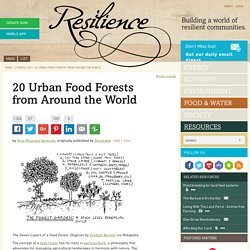
Diagram by Graham Burnett via Wikipedia. The concept of a food forest has its roots in permaculture, a philosophy that advocates for managing agricultural landscapes in harmony with nature. Forest garden. Land Preparation / Cultivation. Raising Guinea Fowl: A Low-Maintenance Flock - Sustainable Farming. Like officious little men in baggy gray suits, the guinea fowl scuttle up and down our driveway.

Since dawn, they've been scouring our orchard for beetles, locusts, spiders, and ticks. Now they are ready to patrol our yard and garden for ants, cockroaches, flies, wasps, termites, cutworms, grubs, and snails. The guinea fowl are relentless in their pursuit. I can remember a time when my husband and I had no guineas. Our former flock had roosted in trees and nested on the ground where, one by one, they had fallen prey to owls and foxes.
Raising Guinea Fowl. A Permaculture Design Course Handbook. The principles above are laid out in Bill Mollison’s later book “Introduction to Permaculture”.
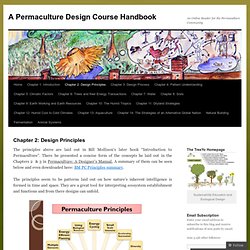
There he presented a concise form of the concepts he laid out in the Chapters 2 & 3 in Permaculture: A Designer’s Manual. A summary of them can be seen below and even downloaded here: BM PC Principles summary. The principles seem to be patterns laid out on how nature’s inherent intelligence is formed in time and space. Permaculture Design Principles. The foundations of permaculture are the ethics (centre) which guide the use of the 12 design principles, ensuring that they are used in appropriate ways.
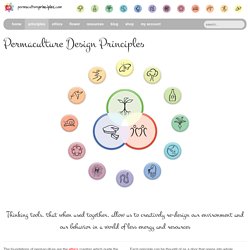
These principles are seen as universal, although the methods used to express them will vary greatly according to the place and situation. They are applicable to our personal, economic, social and political reorganisation as illustrated in the permaculture flower. Each principle can be thought of as a door that opens into whole systems thinking, providing a different perspective that can be understood at varying levels of depth and application.
Click on each of the principles icons to find out more, including a catchy tune about each of them – available from the album Permaculture: A Rhymer’s Manual. A free poster download of the principles is also available. Permaculture Design Principles. The Permaculture Design Principles are a set of universal design principles that can be applied to any location, climate and culture, and they allow us to design the most efficient and sustainable human habitation and and food production systems.
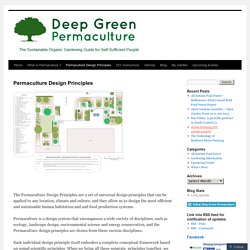
Permaculture is a design system that encompasses a wide variety of disciplines, such as ecology, landscape design, environmental science and energy conservation, and the Permaculture design principles are drawn from these various disciplines. Each individual design principle itself embodies a complete conceptual framework based on sound scientific principles. Permaculture, a design framework drawing on the principles & patterns of nature has been acclaimed to support the design of anything and everything.
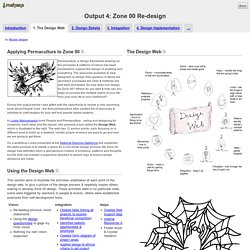
The resources available to help designers re-design their gardens or farms are abundant; processes are clear & methods are well tried and tested. So how does one design for Zone 00? Where do you start & how can you begin to process the multiple layers of your life from your love life to your livelihood? During this output period I was gifted with the opportunity to review a new upcoming book about People Care - the third permaculture ethic packed full of resources & activities to craft designs for your self and people based systems.
The benefits of alternative farming methods. Small-scale farmers produce food for 70% of the global population.
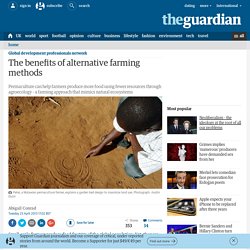
Yet, they are some of the world's poorest and most food insecure people. Alternatives to conventional farming should be embraced to improve subsistence farmers' yields and to ensure adequate food production for the growing global population. The stark reality, according to the International Food Policy Research Institute, is that the world needs to produce more food with fewer resources. Agroecology, a farming approach that mimics natural ecosystems, is an alternative method that can produce more food using fewer resources.
Small-scale farmers in Africa have used agroecology to more than double crop yields within 3 to 10 years of implementation, according to the UN special rapporteur on the right to food. Nitrogen Fixing Plants; leguminous nutrient gleaners. Nitrogen fixing plants play an important role in sustainable gardening.
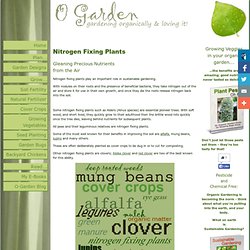
With nodules on their roots and the presence of beneficial bacteria, they take nitrogen out of the air and store it for use in their own growth, and once they die the roots release nitrogen back into the soil. Some nitrogen fixing plants such as Alders (Alnus species) are essential pioneer trees. With soft wood, and short lived, they quickly grow to their adulthood then the brittle wood rots quickly once the tree dies, leaving behind nutrients for subsequent plants. Permaculture - A Quiet Revolution (2008.
Dynamic Accummulator Weeds. Subtropical Permaculture Plant List - Aaron Jerad Designs. 1: Mesquite Tree - bean for flour, nitrogen fixing, over story tree (Full sun) 200 foot taproots draw water up.
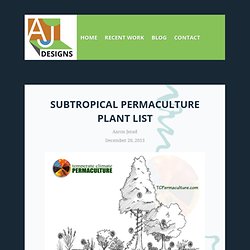
Bee food tree from flowers. Extreme drought tolerance. 1: Fig - Good over-story tree fruit. Full sun only. Creating The Forest Garden. Jerome Osentowski and Peter Bane (USA) [Conference Day 3 @ 16:00 - Submitted Paper (From an article in The Permaculture Activist #31)] After observing the diversity of tropical systems in Nepal and Nicaragua and in particular their rapid establishment, Jerome Osentowski, inspired by Bill Mollison's elaboration of the succession of sub-tropical systems, (Permaculture International Journal 40:24) brought these ideas home to Basalt Mountain in Central Colorado.

Earthships.